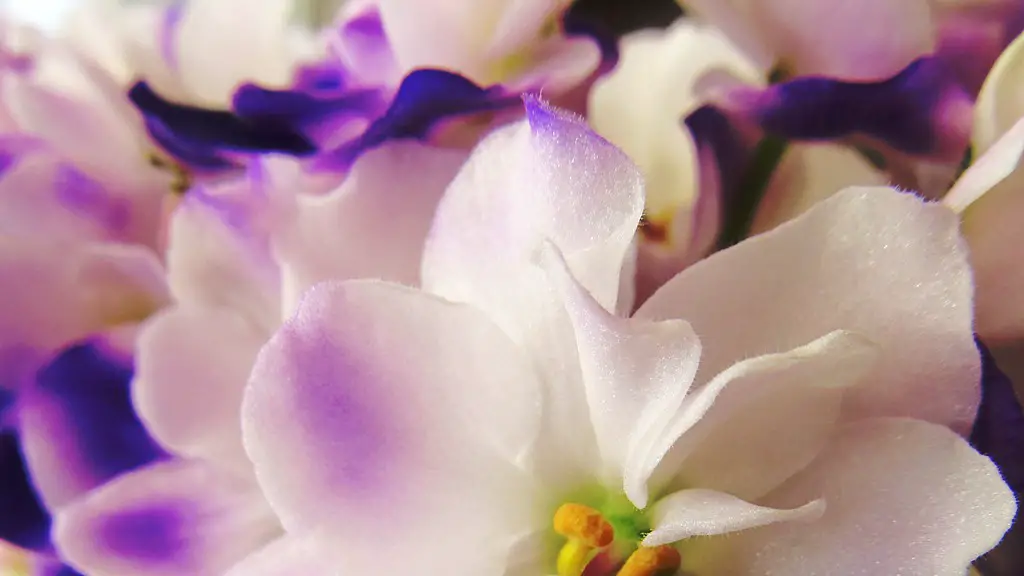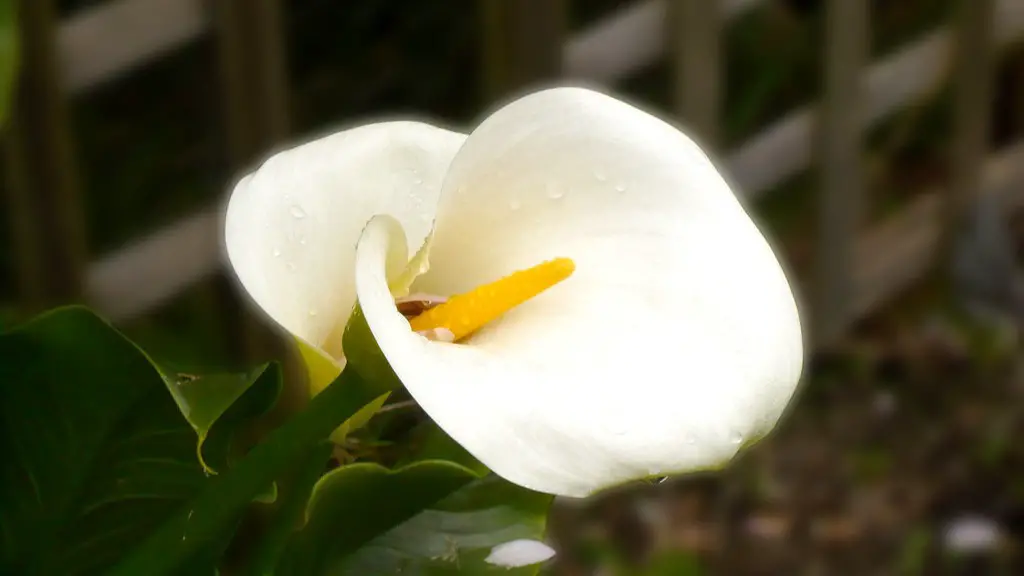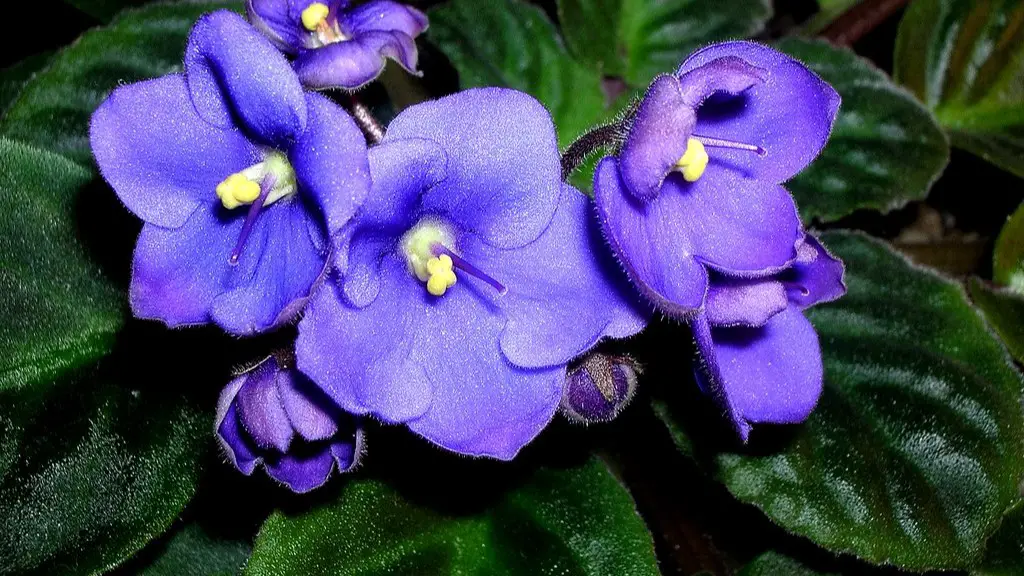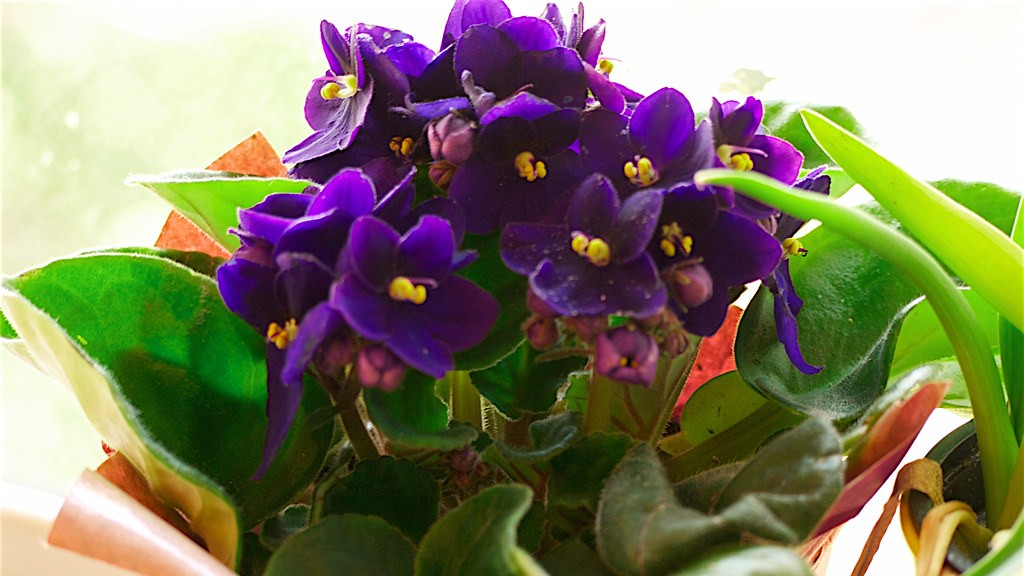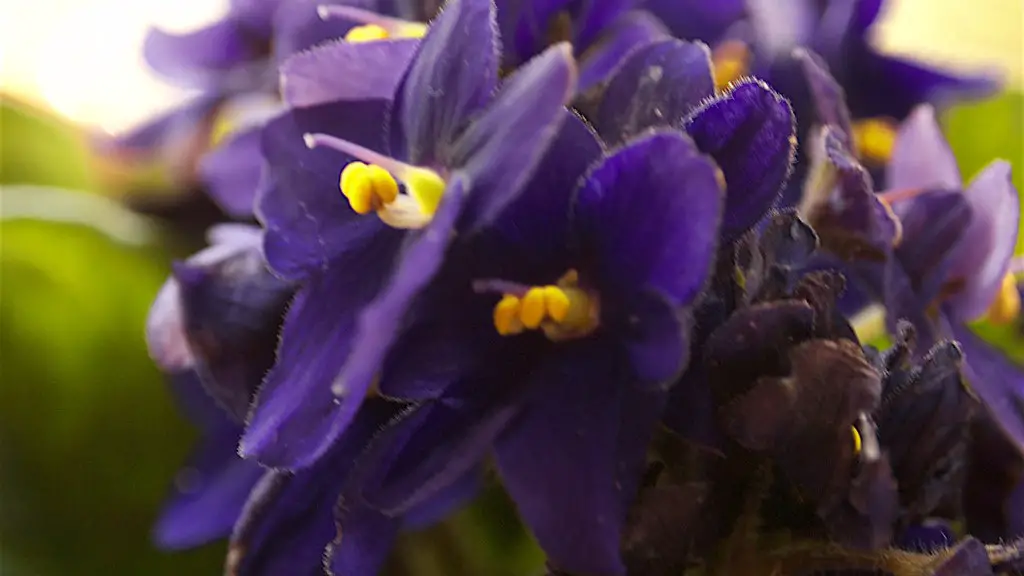African violets are a type of houseplant that is commonly grown for its beautiful flowers. Though they are not difficult to care for, they do require some special attention when it comes to repotting. This is because African violets have delicate roots that can be easily damaged. With a little care, however, you can successfully repot your African violet and keep it healthy and blooming for years to come.
To repot an African violet, start by removing the plant from its current pot. Gently shake off any excess soil and inspect the roots. If they’re crowded or matted, it’s time to repot. Choose a pot that’s only slightly larger than the current one and has drainage holes. Fill it with a quality African violet potting mix and make a small indentation in the center. Gently set the plant in the pot and add more potting mix around the root ball, tamping it down lightly as you go. Water well and give the plant bright, indirect light.
How do you know when to repot African violets?
When you see your African violet starting to wilt, it’s time to repot it into a larger pot. This will give the plant more space to grow and prevent it from becoming root bound.
If you have an African Violet that is looking a bit tired, you can give it new life by repotting it. Start by placing a thin layer of soil in the pot and setting the root ball on top. Then gently cover the roots up to the base of the leaves. Be sure to pat the soil down just enough to stabilize the plant, but don’t compact it too much. Next, place the pot in a saucer of water and let the plant soak up as much as it needs. After a few hours, your African Violet will be refreshed and ready to start growing again.
What time of year do you repot African violets
If you notice that your African Violet’s roots are growing out and around the rootball, it’s time to repot the plant. African Violets should be repotted every year or two, or whenever the plant becomes rootbound.
African violets do best when they are slightly pot-bound, so choose a pot that’s on the smaller side. A professional tip is to choose a pot that is 3-4 inches in diameter for a standard African violet plant.
Should African violets be watered from the bottom?
It’s really up to you whether you water your African violets from the top or bottom. However, it is important to use lukewarm or warm water, as cold water can shock the plant. If you do water from the top, be careful not to get water on the leaves when the plant is in the sun, as this can cause leaf spots.
The good news is that it’s easy to root these flowering beauties. The quickest and easiest way I’ve found to root African violets is in water using a leaf. You can take the leaf from your existing African violets, or even from a friend’s plant.
What kind of pots do African violets like?
If you’re looking to grow African violets, it’s best to do so in small, self-watering pots made of ceramic or plastic. This will provide the plants with the optimal amount of moisture to help them thrive.
Peat moss is used to lower the pH level in African violet potting soil because these plants prefer slightly acidic conditions. Conventional soil usually has a higher pH level, which can make it difficult for violets to absorb nutrients efficiently. By mixing peat moss into the soil, you can help create the ideal conditions for these beautiful plants to thrive.
Do you water African violets after repotting
When repotting your African violet, be sure to add water afterward to compact the soil. You may need to add a bit more potting mix to the top of the pot to stabilize the plant. Keep the pot small and shallow, as African violet roots generally do not grow deep or wide.
It’s no wonder that African violets (Saintpaulia spp) are such popular houseplants – they are relatively easy to care for and can last indefinitely with proper care. According to the Bay State African Violet Society, it’s not unusual for African violets to live 50 years or more. The key to prolonging their lifespan is to avoid overwatering, chilling and direct sunlight – all of which can have a drastic impact on an African violet’s health. With a little TLC, you can enjoy these beautiful plants for many years to come.
How do you repot African violets with long necks?
It is important to switch to a high quality soil mix when planting violets. This will ensure that the plants have the nutrients they need to thrive.
Wicking systems are an easy and effective way to water your African violets without worry of over doing it. All you need is a small container, some sort of wicking material, and your African violet pot. Fill the container with water and set it on top of the pot. Place the wicking material in the container so that it hangs down into the pot. Make sure that the wicking material is long enough to reach the bottom of the pot. The wicking material will absorb the water and transport it to the soil of the pot, where the roots can take it in. Check the pot every few days to see if the water level in the container needs to be replenished.
Do African violets do well in terracotta pots
Terra cotta pots are ideal for African violets because they are porous and allow the roots to breathe while also preventing the soil from becoming too wet. African violet roots do not go very deep; they tend to spread out sideways, so a shallow pot is best. Your pot must have suitable drainage holes so you can water from underneath.
If you are concerned about the quality of your tap water, it is best to use filtered or distilled water for your African violets. Chlorine levels can fluctuate depending on the season, and in some areas tap water may have high levels of chlorine, chloramines, or dissolved solids. These things may adversely affect your African violets, so it is best to err on the side of caution and use filtered or distilled water.
How do you encourage African violets to bloom?
If your African violet isn’t blooming, it’s likely because it’s not getting enough light. African violets need indirect sunlight, as direct sunlight can burn the leaves. Choose a north- or east- facing window for the best results, and keep plants away from cold glass. Rotate the pot once a week so all leaves receive light.
If you want your African violet to bloom again, here are 8 ways to make it happen:
1. Let There Be Light: African violets need bright, indirect light to bloom. If you’re not getting enough light, try moving your plant to a bright spot.
2. Turn Up the Humidity: African violets love humid conditions. Try placing your plant on a pebble tray or misting it regularly to increase the humidity around it.
3. Replenish Essential Nutrients: African violets need regular fertilization to bloom. Use a fertilizer made specifically for African violets and fertilize every 2-3 weeks.
4. Keep it Pleasant: African violets like it on the cooler side, around 60-70 degrees Fahrenheit. Make sure your plant is not in a drafty spot or near a heating vent.
5. Choose the Right Soil: African violets need a well-draining soil that is high in organic matter. You can make your own African violet potting mix or purchase one at a garden center.
6. Protect From Pests & Disease: African violets are susceptible to pests and diseases. Inspect your plant regularly
Conclusion
To repot an African violet, start by filling a new pot with fresh potting soil. Then, carefully remove the plant from its old pot and loosen the roots. Next, place the plant in the new pot and fill in any gaps with more potting soil. Finally, water the plant and place it in a warm, sunny spot.
To repot an African violet, start by removing the plant from its pot. Next, loosen the roots and trim off any that are dead or damaged. Then, place the plant in a new pot that is only slightly larger than the old one and fill it with fresh potting mix. Be sure to water the plant well and place it in a location with bright, indirect light.
